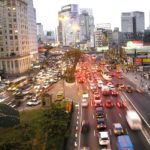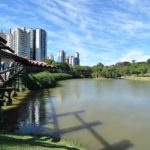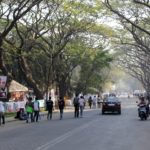
“If you want to seed a place with activity, put out food.” – William H. Whyte. Packed with food, music and flowers, some fresh food markets have become popular tourist destinations in cities worldwide. Travelers weary of big-box supermarkets and ...


Anfavea, Brazil’s auto industry trade group, has predicted that personal car sales will increase 68 percent, from 3.4 million units in 2011 to 5.7 million by 2016. One of the barriers Brazil has faced when attempting to transition to cleaner ...


City design is at the root of many of our global problems. With traffic crashes the leading cause of death among young people and congestion burdening the economies of countless cities worldwide, it’s imperative that we develop our streets, neighborhoods, ...


Brazil has what may seem like a fortunate problem: public finance is too readily available for transport projects. The government financed most of the improved transport for the 2014 World Cup and 2016 Rio Olympics, while the three big public ...


By 2030, the world is projected to spend an estimated $10 trillion on repairing and expanding water infrastructure. Dams and treatment plants are aging, water demand is surging, and more frequent extreme weather events threaten our water security—each driving up water management ...


Bus rapid transit (BRT) and Bus of High Level of Service (BHLS) have been implemented in 197 cities around the world, with corridors extending a total of 5,000 km and carrying 32 million passengers per day. Furthermore, as cities continue ...


As they rapidly develop, many cities around the globe continue to clear urban forests for grey infrastructure. Indeed, roads, buildings and other parts of the built-environment are absorbing volumes of urban greenery, as trees and grass often lack priority within ...


Wondering if it would be faster to bike, take the bus or metro to work? A simple search on Google Maps or your preferred transit app can give you this information almost instantly, thanks to transit agencies that provide their ...


It’s been over 19 years since the UN’s last Habitat conference—and with only one year left until Habitat III, countries across the globe are preparing for the UN’s next global conference on human settlements. Habitat III will be in Quito, ...


How do we make cities work for people? As a WRI Helms Fellow on Urban Governance and Sustainable Cities, Maria Antonia Tigre was tasked with answering this question. Through From ideas to implementation: creating sustainable cities with good governance here ...

Page 105 of 348« First...1020...104105106...110120...Last »